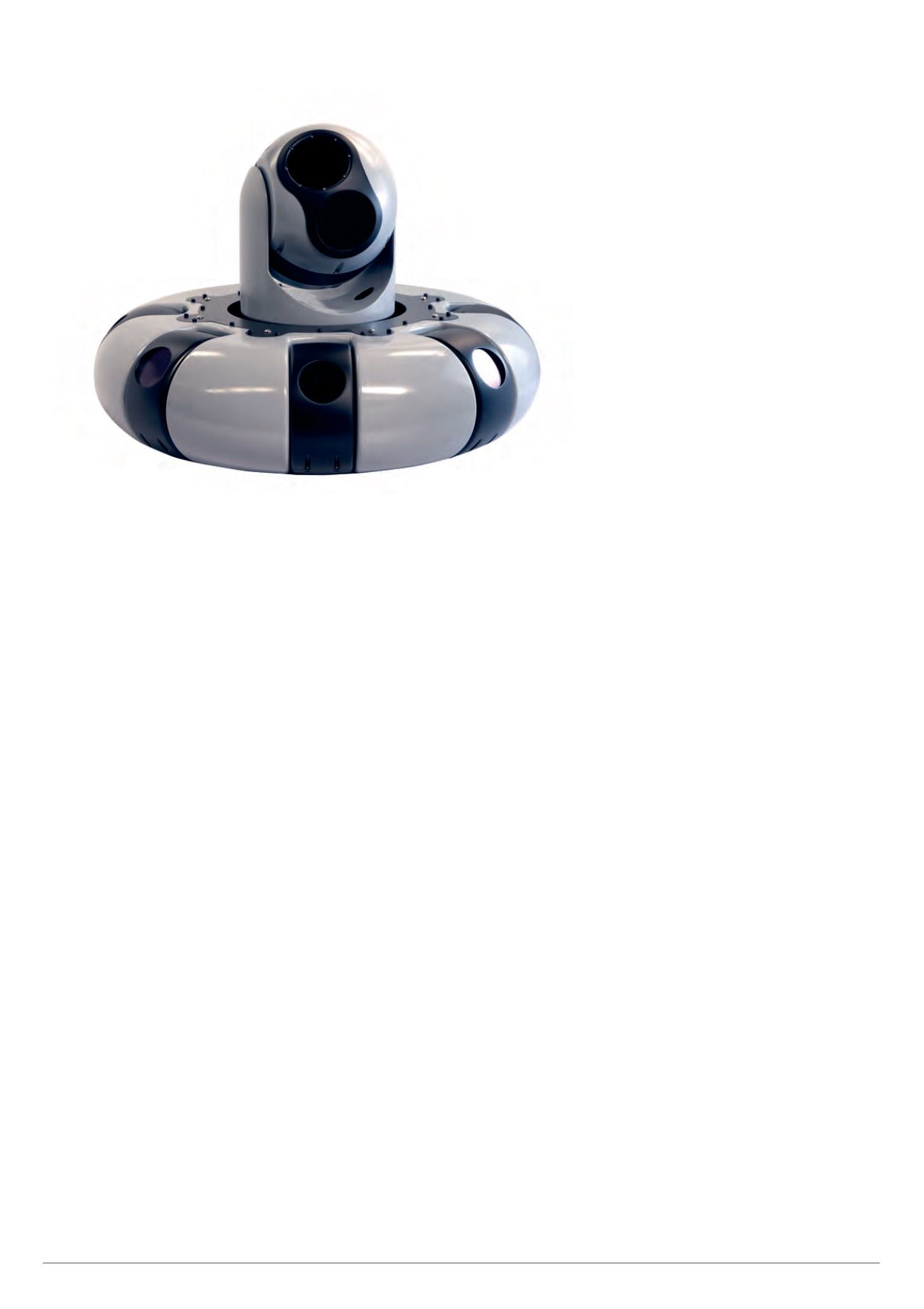

46
He added that for a three-antenna
configuration, two MB-Twos are required.
Like the MB-One, the MB-Two has two
antenna inputs. The position accuracy
specifications are the same for both
receivers, but the MB-Two can use more
signals. The dual frequency heading is
not more accurate, but can be faster to
obtain a fixed solution and is considered
more robust.
Dechant explained, “Our Z-Blade
technology drives a powerful GNSS-
agnostic engine, which uses over-the-
air satellite corrections via the L-band
hardware to achieve centimetre-level
accuracy with Trimble RTX corrections
over land, which are available on
subscription.”
New from BMS, Brad Coleman
reported, is the fourth generation of
his company’s handheld portable
microwave receiver. The Carry-Viewer 4
(CV4) can show live video downlinked
from manned or unmanned vehicles
using COFDM technology. It features
a 7 in LCD colour monitor to provide
a high-definition picture, and has
touchscreen operation.
Coleman reported that BMS supports
video links with equipment that has the
capability to receive and transmit up to
150 miles in the right conditions, and he
pointed out that the COFDM waveform
is very robust, “allowing broadband
connectivity in challenging situations”.
The CV4 is a complete diversity receiver
with twin antennae, which independently
pick up the signal. The software then
evaluates the quality of each signal
and combines them to best recover the
original transmission.
“Data links are subject to reflections
from the likes of trees, cars and so
on before arriving at an antenna, and
sometimes all the resulting waves
combine to interfere and cancel each
other out,” he said.
“With two antennae that are spaced
appropriately far apart, and with the
COFDM signal, BMS diversity receivers
can overcome this issue and provide
improved link reliability.”
It’s a truism that radars detect
targets and cameras identify them, but
the Visual Detection And Ranging (Vidar)
software from Sentient and a combination
of multiple staring wide-angle cameras
and a gimballed electro-optical (EO)
sensor with zoom capabilities looks set to
shake that assumption.
Resembling a classic UFO, the new
camera system was on display at the
show.
Based on long experience of watching
the ocean from the air, Sentient’s Vidar
video processing algorithms know what
June/July 2016 |
Unmanned Systems Technology
Sentient’s Vidar software runs in a
new maritime camera and sensor
system built by Ascent Vision
‘normal’ looks like and are programmed
to pick out tiny anomalies that could be
objects of interest, such as small boats,
people or periscopes in the water, from
the wide-angle camera imagery and
to cue the long-range sensor for target
confirmation and identification.
Ascent Vision, which has previously
relied on more conventional maritime EO
sensors, has built a new camera system
designed to exploit the Vidar software.
The result is a mostly carbon fibre
structure that supports between one and
five 9.1 megapixel digital daylight TV
cameras that cover a 180° arc ahead
of the aircraft and cue Ascent Vision’s
standard CM202 gyro-stabilised sensor
payload, which can be fitted with high-
definition EO and mid- or long-wave
IR sensors and lasers, depending on
customer requirements.
Weighing 11 kg, it is 500 mm in
diameter and 150 mm tall, and is
small and light enough for UAVs or
helicopters. It provides good-weather
performance equivalent to a much larger
and heavier radar, said Ascent Vison’s
Tim Sheehy.
Sentient’s Simon Olsen, said, “We have
a deployment on a Challenger 604 with
Cobham; the job is SAR, and the task is
to automatically detect, cross-cue and
classify either a rubber raft or a person
in the water while the aircraft moves at
200 knots in 4 s. That raises the game for
search and rescue.”
Volz Servos is introducing clutched
servos for optionally piloted vehicles
(OPVs), Phillipp Volz reported. The first
is a version of its DA 26, the DA 26-MC,
indicating magnetic clutch.
The clutch in question is electro-
mechanical and is able to transfer twice
the servo’s peak torque without slippage.
It is designed such it can never fail
engaged; additionally, a slip clutch can
be added.
Those measures ensure the pilot is
always able to control the aircraft.
“The first customer who has chosen the
DA 26-MC has successfully integrated









